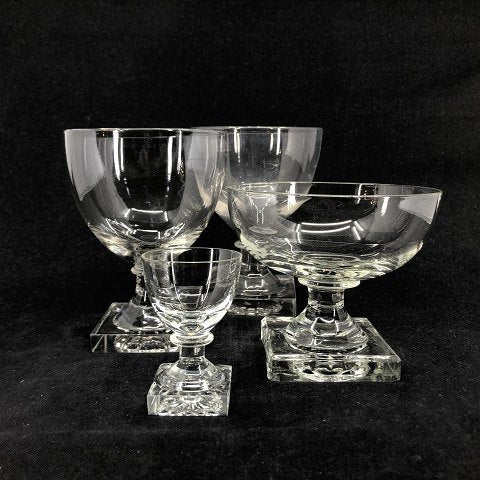
When glasses get sick
For the time being, this blog has hopefully made you a bit more knowledgeable about the glass material. The time has now come to address its most widespread ailment – glass plague.
Glass plague can be compared to rust. The plague causes discoloration and washing out of individual parts of the material. In some cases, the plague can be felt with a fingernail and it gives the glass a foggy and cloudy appearance. Often the plague will appear as white spots or bands, and there can be several reasons why it announces its arrival. As a rule, it will occur as a result of a lack of rinse aid and salt in the dishwasher. If you wash your glasses in very hot water, the risk of glass plague also increases. In the worst case, the plague can occur simply because you put the glasses upside down in the cupboard.
If you want to minimize the risk of glass plague, you should wash your most loved glasses by hand. If you cannot do without the dishwasher, you should open the machine as soon as it has run the last rinse. Then immediately wipe the glasses with a tea towel.
Before you discard a sick-looking glass, it is a good idea to make sure that the glass is affected by glass plague. Because soap and lime deposits are confusingly similar to the plague. Try wiping the glass with a cloth that you have soaked in household vinegar. If the glass becomes clear when the surface is no longer wet, the vinegar has dissolved the dirt. If the glass still looks cloudy, you are sure that it has got plague.
If you use this little trick, the good news is that you won't be in any doubt when your glasses have been hit. The bad news, however, is that there isn't much you can do about it. Like humans, glasses are fragile creatures, and if you don't take care of them, they become sick and sad to look at. Here from an invitation to give your glasses lots of love. If you do that, they can live both happily and long.
Glass plague can be compared to rust. The plague causes discoloration and washing out of individual parts of the material. In some cases, the plague can be felt with a fingernail and it gives the glass a foggy and cloudy appearance. Often the plague will appear as white spots or bands, and there can be several reasons why it announces its arrival. As a rule, it will occur as a result of a lack of rinse aid and salt in the dishwasher. If you wash your glasses in very hot water, the risk of glass plague also increases. In the worst case, the plague can occur simply because you put the glasses upside down in the cupboard.
If you want to minimize the risk of glass plague, you should wash your most loved glasses by hand. If you cannot do without the dishwasher, you should open the machine as soon as it has run the last rinse. Then immediately wipe the glasses with a tea towel.
Before you discard a sick-looking glass, it is a good idea to make sure that the glass is affected by glass plague. Because soap and lime deposits are confusingly similar to the plague. Try wiping the glass with a cloth that you have soaked in household vinegar. If the glass becomes clear when the surface is no longer wet, the vinegar has dissolved the dirt. If the glass still looks cloudy, you are sure that it has got plague.
If you use this little trick, the good news is that you won't be in any doubt when your glasses have been hit. The bad news, however, is that there isn't much you can do about it. Like humans, glasses are fragile creatures, and if you don't take care of them, they become sick and sad to look at. Here from an invitation to give your glasses lots of love. If you do that, they can live both happily and long.